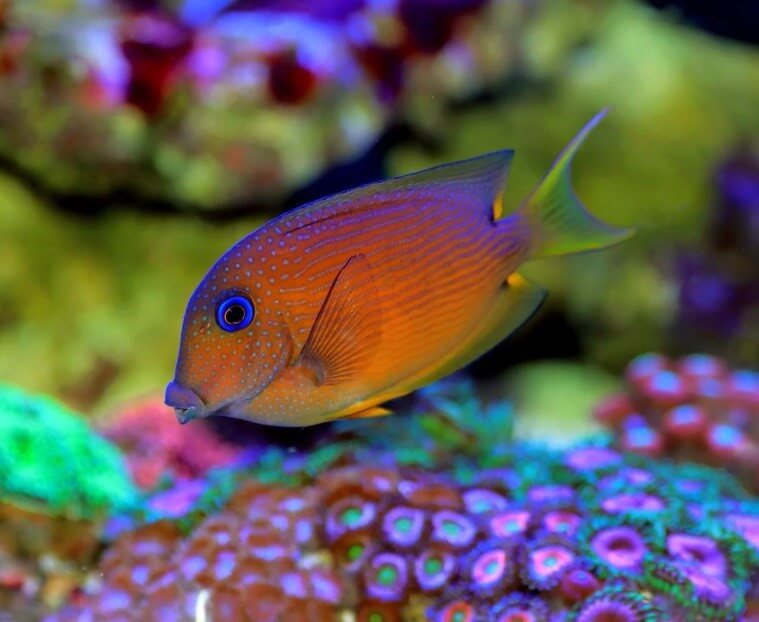| Two Spot Bristletooth Tang |
| CARE LEVEL | TEMPERAMENT | DIET |
REEF SAFE |
| Moderate | Semi-Aggressive |
Herbivore |
Yes |
| PURCHASE SIZE | MAX SIZE |
ORIGIN |
TANK SIZE |
|
SM: 2-3" |
6" |
Fiji, SI, Indo, Philli |
70g |
| SG |
TEMPERATURE |
dKH |
pH |
| 1.020-1.025 | 72-78F |
8-12 |
8.1-8.4 |
|
View Marine Fish Compatibility Chart Ctenochaetus binotatus The Two Spot Bristletooth Tang is also known as the Blue Eye Tang, Blue Eye Kole Tang, Two Spot Surgeonfish, and the Two Spot Tang. Two Spot Bristletooth Tang is native to the Indo-Pacific region, excluding the Red Sea, Hawaii and the Marquesas Islands. Their name comes from the two dark spots located near the tail fin. Two Spot Tangs have bright blue rings around their eyes. The juveniles of this species look very similar to the adults with an orangish brown to dark brown body featuring horizontal, greenish blue lines across the body. The blue horizontal marks seem slightly more exaggerated on the juveniles, as well as their tails and fins having a bit more yellow than adults. They will use their spines as a weapon against other fish that threaten them. The Two Spot Bristletooth can reach up to 8 inches in length and requires an aquarium of at least 100 gallons with live rock and plenty of room to swim. Use caution when housing with other Tangs or Surgeonfish. Similar shaped Tangs can be very aggressive towards each other. Tangs require a natural diet of seaweed and algae, which can be fed to them tied to a rock or by use of a veggie clip. This should be a done a minimum of 3 times a week. Tangs will also enjoy meaty foods with the other fish in your aquarium. |
|
For more information about this species and more visit our Marine Fish Care Blog.
|

